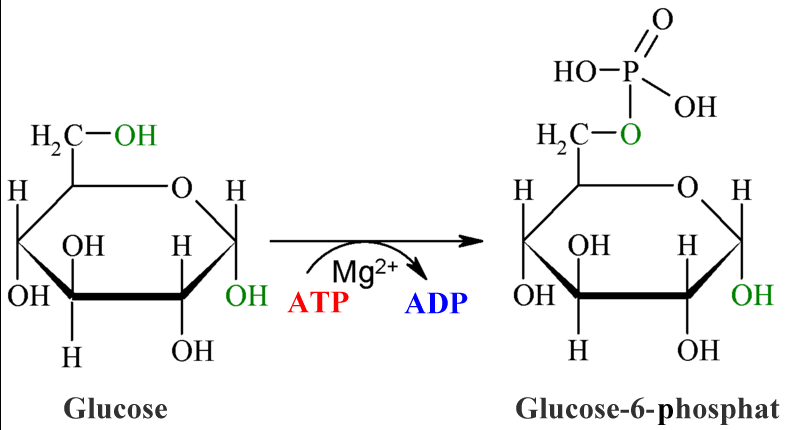
- a) Hexokinase ✓
- b) Phosphofructokinase
- c) Pyruvate kinase
- d) Aldolase
In glycolysis, the conversion of glucose to glucose-6-phosphate is a crucial step that initiates the metabolic pathway for glucose breakdown. This reaction is catalyzed by an enzyme known as hexokinase.
Step-by-Step Explanation:
- Glycolysis Overview: Glycolysis is a series of enzymatic reactions that convert glucose into pyruvate, producing ATP and NADH in the process. It occurs in the cytoplasm of cells and consists of ten steps.
- First Step of Glycolysis: The first step in glycolysis involves the phosphorylation of glucose. This reaction is essential because it traps glucose within the cell and prepares it for further metabolism.
- Role of Hexokinase: Hexokinase is the enzyme responsible for this phosphorylation reaction. It catalyzes the transfer of a phosphate group from ATP (adenosine triphosphate) to glucose, resulting in the formation of glucose-6-phosphate.
- Mechanism: The mechanism involves hexokinase binding to both glucose and ATP, facilitating the transfer of a phosphate group from ATP to the hydroxyl group on carbon 6 of glucose. The overall reaction can be summarized as: Glucose + ATP → Glucose-6-phosphate + ADP
- Importance of Glucose-6-Phosphate: The formation of glucose-6-phosphate serves multiple purposes:
- It prevents glucose from leaving the cell since phosphorylated sugars cannot easily cross cell membranes.
- It acts as a substrate for further reactions in glycolysis or can enter other metabolic pathways such as glycogenesis or pentose phosphate pathway.
- Other Enzymes Listed:
- Phosphofructokinase (PFK): This enzyme catalyzes a later step in glycolysis, specifically converting fructose-6-phosphate to fructose-1,6-bisphosphate.
- Pyruvate Kinase: This enzyme catalyzes one of the final steps in glycolysis, converting phosphoenolpyruvate (PEP) to pyruvate while generating ATP.
- Aldolase: This enzyme catalyzes a different reaction where fructose-1,6-bisphosphate is split into two three-carbon molecules.
Given this detailed analysis, we can conclude that:
The correct answer is: a) Hexokinase







